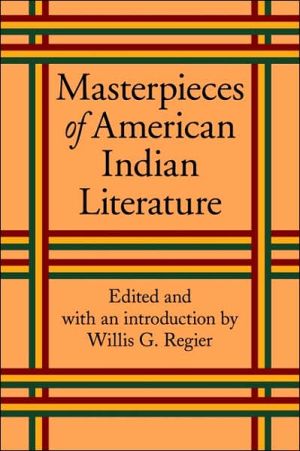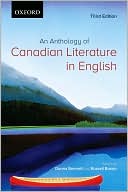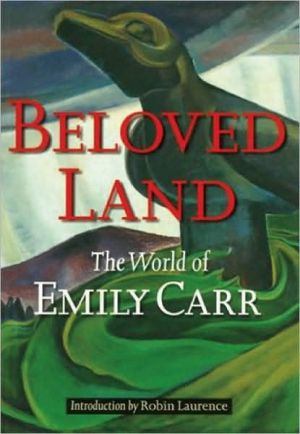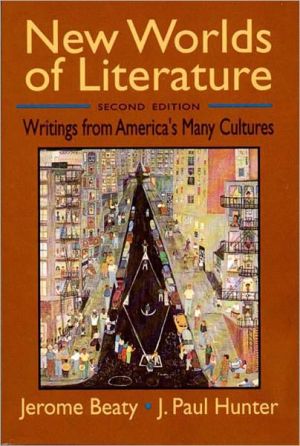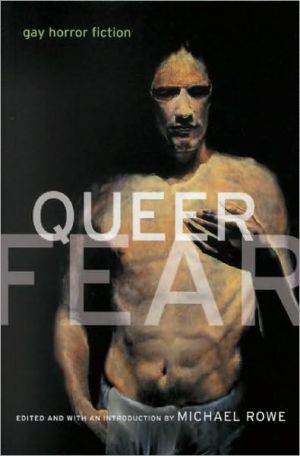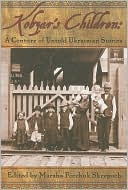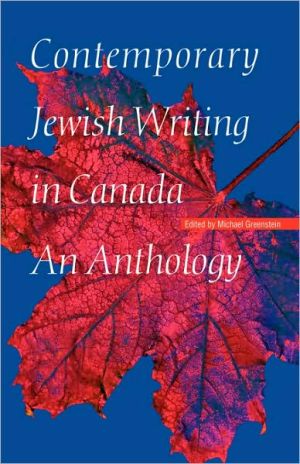Masterpieces of American Indian Literature
The five complete and unabridged works collected here are parts of a long and passionate testimony about American Indian culture as related by Indians themselves. Deep emotions and life-shaking crises converge in these pages concerning identity, family, community, caste, gender, nature, the future, the past, solitude, duty, trust, betrayal, leadership, war, and apocalypse. Each work is also regarded as a classic of Native literature and has much to teach. The Life of Kah-ge-ga-gah-bowh...
Search in google:
The five complete and unabridged works collected here are parts of a long and passionate testimony about American Indian culture as related by Indians themselves. Deep emotions and life-shaking crises converge in these pages concerning identity, family, community, caste, gender, nature, the future, the past, solitude, duty, trust, betrayal, leadership, war, and apocalypse. Each work is also regarded as a classic of Native literature and has much to teach. The Life of Kah-ge-ga-gah-bowh (1847) by George Copway, a Canadian Ojibwe writer and lecturer, describes his unique and difficult cultural journey from the tiny village of his youth to the legislatures of the world, speaking for the rights and sovereignty of Indians. The Soul of the Indian (1911) by Charles Eastman, a physician and mixed-blood Sioux, depicts “the religious life of the typical American Indian as it was before he knew the white man.” American Indian Stories (1921) by Zitkala-Ša, one of the most famous Sioux writers and activists of the modern era, includes legends and tales from oral tradition, childhood stories, and allegorical fiction. Coyote Stories (1933) by Mourning Dove, an Okanagan writer, retells the popular trickster tales of Coyote, the most resilient character in all of American literature. Black Elk Speaks (1932) as told through John G. Neihardt, is the spacious religious vision and candid life story of a Lakota holy man. Neihardt and Black Elk collaborated to produce a unique and inspirational work.Patricia Moore - KLIATTRegier has gathered here five of the earliest and best-known examples of American Indian writing. George Copway first published his life story in 1847 and it reverberates with the tension of a man proud of his Ojibway heritage and anxious to spread the gospel of Christianity to his own people, a man who strove to explain his traditions to white Americans even as he blamed them for the ills that had befallen his people. Charles Alexander Eastman, a Santee Sioux, first published "The Soul of the Indian" in 1911 when he was already a physician, had cared for the survivors at Wounded Knee, and had dedicated himself to the well-being of the Sioux on Pine Ridge reservation. Many of the "American Indian Stories" of Zitkala-Sa (Gertrude Bonnin) were published first in Harper's and the Atlantic Monthly in 1900 and 1901. Bonnin, a Yankton Sioux, tried to use the stories of her life and people to preserve tradition in a world that promoted assimilation of the Indian at all costs. Mourning Dove (Christine Quintasket), a Salish activist, recorded the folk stories of her people and published them in the 1920s even as she was working as a political organizer for her people. The last work that Regier includes here is the complete "Black Elk Speaks" as told to John Neihardt in the 1930s, a staple of all early American Indian literature. While the literature here is unannotated and unevenly presented (Mourning Dove and Black Elk alone receive detailed introductions), the presence of these works in accessible form makes this a valuable addition to any reference shelf. KLIATT Codes: JSA—Recommended for junior and senior high school students, advanced students, and adults. 1993, Univ. ofNebraska Press, 623p. illus. bibliog., Ages 12 to adult.
\ Multicultural Review“These classic works speak of identity, family community, caste, gender, nature, the future, the past, solitude, duty, trust, betrayal, leadership, war, and the apocalypse. . . . This is the only anthology that includes all in an unabridged edition, priced attractively.”—Multicultural Review\ \ \ \ \ Multicultural Review“These classic works speak of identity, family community, caste, gender, nature, the future, the past, solitude, duty, trust, betrayal, leadership, war, and the apocalypse. . . . This is the only anthology that includes all in an unabridged edition, priced attractively.”—Multicultural Review\ \ \ \ Regier has gathered here five of the earliest and best-known examples of American Indian writing. George Copway first published his life story in 1847 and it reverberates with the tension of a man proud of his Ojibway heritage and anxious to spread the gospel of Christianity to his own people, a man who strove to explain his traditions to white Americans even as he blamed them for the ills that had befallen his people. Charles Alexander Eastman, a Santee Sioux, first published "The Soul of the Indian" in 1911 when he was already a physician, had cared for the survivors at Wounded Knee, and had dedicated himself to the well-being of the Sioux on Pine Ridge reservation. Many of the "American Indian Stories" of Zitkala-Sa (Gertrude Bonnin) were published first in Harper's and the Atlantic Monthly in 1900 and 1901. Bonnin, a Yankton Sioux, tried to use the stories of her life and people to preserve tradition in a world that promoted assimilation of the Indian at all costs. Mourning Dove (Christine Quintasket), a Salish activist, recorded the folk stories of her people and published them in the 1920s even as she was working as a political organizer for her people. The last work that Regier includes here is the complete "Black Elk Speaks" as told to John Neihardt in the 1930s, a staple of all early American Indian literature. While the literature here is unannotated and unevenly presented (Mourning Dove and Black Elk alone receive detailed introductions), the presence of these works in accessible form makes this a valuable addition to any reference shelf. KLIATT Codes: JSA—Recommended for junior and senior high school students, advanced students, and adults. 1993, Univ. ofNebraska Press, 623p. illus. bibliog., Ages 12 to adult. \ —Patricia Moore\ \ \ \ \ This volume collects five top Native American texts: George Copway's The Life of Kah-ge-ga-gah-bowh (1847), Charles Eastman's The Soul of the Indian (1911), Zitkala-Sa's American Indian Stories (1921), Mourning Dove's Coyote Stories (1933), and Black Elk and John G. Neihardt's Black Elk Speaks (1932). The text includes illustrations; editor Regier provides an introduction. Copyright 2005 Reed Business Information.\ \
